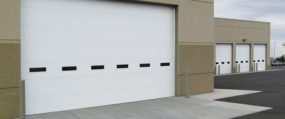Since the beginning of time, auto dealerships have been looking at ways to attract more customers and increase profits. The days of making huge profits on new and used vehicle sales are long gone. Competition is at an all-time high, customer loyalty is harder to secure, and online sales result in customers not needing to step into the showroom.
Dealership Profits
According to the most recent data from the National Automobile Dealers Association (NADA), the average Auto Dealership makes 24.6% gross profit on new car sales and 28.5% on used car sales. Nearly half of their profits, 46.9%, come from service, parts, and the body shop departments. https://www.nada.org/WorkArea/DownloadAsset.aspx?id=21474862022
Customer Experience at the Service Bay
With this data in mind, it is no surprise that dealerships are extending their showroom ideas into the service department. The customer experience has become the focal point when designing a new dealership or renovating an existing one. For many customers, the service entrance maybe their initial visit to the dealership and first impressions are critical to keep them coming back. Clean tile floors, bright lighting, temperature-controlled environments, and high-end fixtures are the new norm. Service bay high speed roll up garage doors with full vision create a more inviting entrance for the customer, which is why many dealerships are turning their attention to these types of doors. It is important that you do your homework though. Making the wrong decision on doors can cost you big bucks in the long run.
Commercial Garage Doors vs. High-Speed Roll-up Doors
With all the various door options on the market, it is difficult to choose which one will be best for your dealership. Safety, energy savings, aesthetics, maintenance, speed, and cost all play a part in the decision.
Commercial Garage Doors
Pros:
Upfront Cost: Least expensive option upfront with multiple choices to fit your budget.
Parts: Minimal design changes over time translates to parts that are widely available and easily sourced.
Aesthetics: Various panel options provide a pleasing view and coordinate with the overall architectural scheme.
Cons:
Maintenance: Designed with springs and hardware that last anywhere from 15,000-25,000 cycles (1 cycle = 1 Open & Close). With the busiest dealerships seeing 100-200 cycles per day, repairs can add up quickly. Springs, rollers, cables, and drums are the most common wear parts. These service calls can cost between $500-$1,000 per trip depending on the issue and day/time of the week the service is needed.
Speed: Open and close speeds between 8”-12” per second. On a 12’ high service bay door it takes 12-18 seconds to open and the same to close. Not only is your customer waiting for the door to open, but you are also losing precious environmental control in the space and putting stress on the HVAC systems. Slow speed doors also have a higher likelihood that they will be struck by your customer, which will require replacement panels and potentially a full door replacement. Not to mention the car that now needs to go to the body shop! Panel replacements run $500-$2000 per panel depending on style and size.
Space Requirements: Commercial garage doors roll back into the building and take up space along the ceiling that often obstructs lighting, HVAC, and plumbing. The door components are exposed as well, which is not aesthetically pleasing.
High-Performance High-Speed Roll-Up Garage Doors
Pros:
Maintenance: Typically lower maintenance costs. Some high-performance doors on the market still have springs, cables, and rollers. Choosing a door without these degradable parts is ideal to avoid maintenance and repairs.
Longevity: Routinely outlast commercial garage doors, 10 to 1. Most have the capability of reaching 500,000-1,000,000+ cycles before a major repair.
Speed: Travel at speeds up to 80” per second. On a 12’ opening, these doors can open in less than 2 seconds. This means customers will not have to wait for the door to open, it will be easier to maintain inside temperatures, and the potential for damage will be reduced.
Space Requirements: Most designs roll up above the opening into an enclosed shroud. They do not obstruct utilities on the ceiling and can be covered by stylish hoods that hide the mechanicals.
Safety: Utilize PLC controllers which allow for endless connectivity. Common safety features include photo eyes, light curtains, communication lights, and auto-close timers. The controls can also be easily tied to building security systems.
Activation: Can be integrated with various activation features, such as floor loopms, motion detectors, push button controllers, remote controllers, keypads, and more. PLC controllers offer numerous options.
Aesthetics: Can be matched to RAL colors and feature a low-profile appearance.
Cons:
Upfront Cost: Cost 2-3 more times than commercial garage doors.
Parts: Require high-performance parts that in most cases can only be purchased from an authorized distributor or directly from the manufacturer. Doors that are designed and built outside of the U.S. may be difficult to source or have long lead times.
So, before you buy, do your homework! Both types of doors have their place, but it is important to understand the potential short- and long-term costs associated with both options.
If you are struggling with your decision, ASI Doors can help. We specialize in these applications and other high-performance high-speed door solutions. Contact us today!
